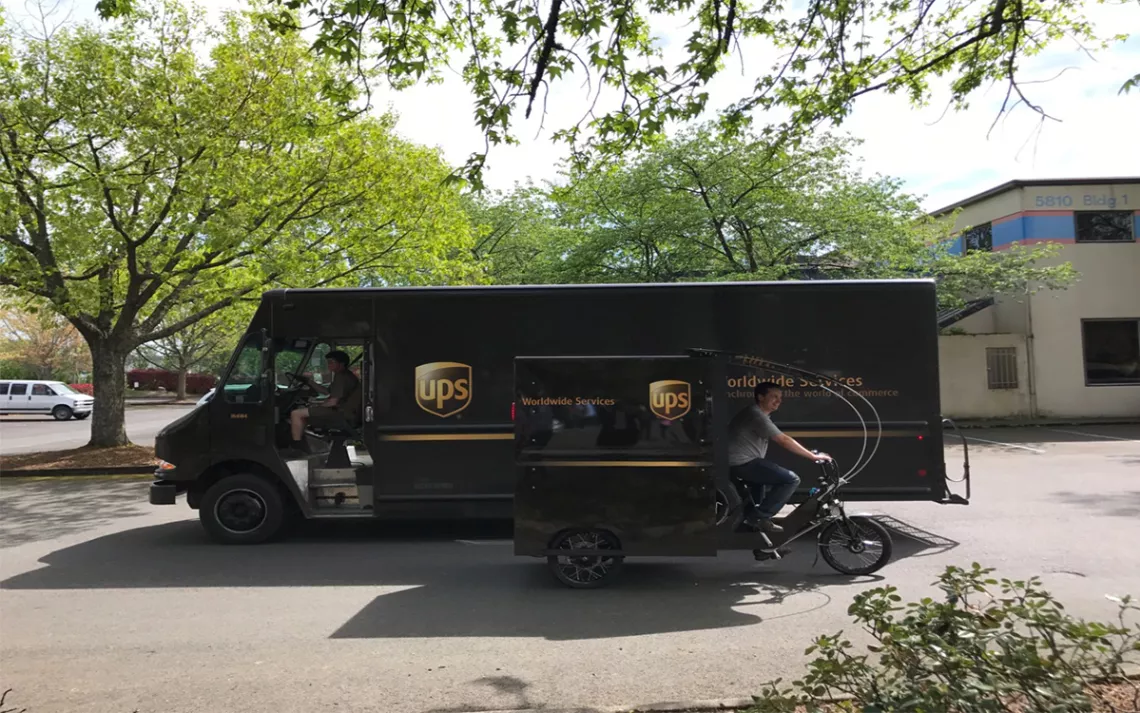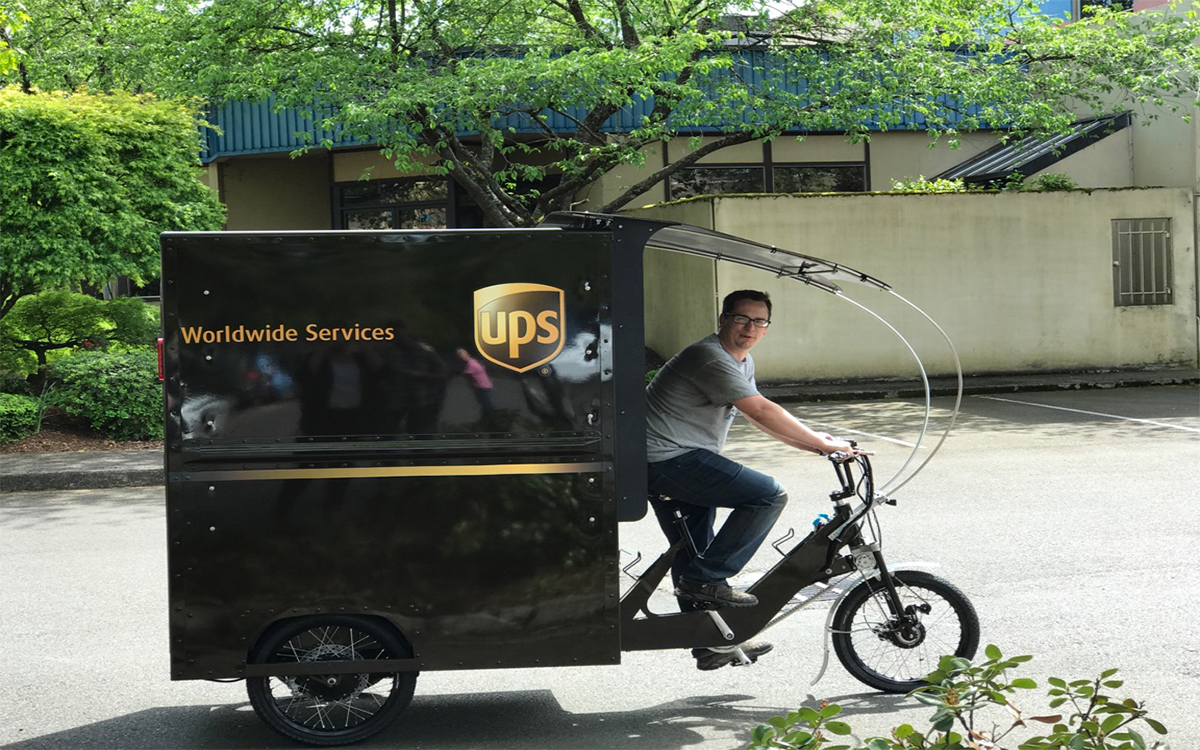What Does an eBike Do When It Grows Up?
Truck Trike delivers the goods

Photos courtesy of UPS
Bill Stites believes, first and foremost, in efficiency. He founded his Portland-based bike-engineering firm, Truck Trike, on the principle that a vehicle should not weigh more than its payload. That belief already biased him toward bicycles, which typically carry over five times their own weight. But standard bicycles have pretty limited carrying capacity; there’s only so much space on the frame and so much leg-power in the rider. What Stites has done is harness the efficient size and green operation of bicycles for a more demanding payload: His 250-pound Truck Trike can haul a 750-pound load.
Attracted by Portland’s bike culture, Stites moved to the city in 1997 armed with a doctorate in chiropractics and a knowledge of human ergonomics. In 2010, he married his experience designing lightweight multipurpose vehicles to his concern for the environment, and Truck Trike was born.
In 2015, UPS tapped Stites to create vehicles for its “rolling laboratory,” a project that deploys a fleet of 8,000 alternative-fuel and zero-emission vehicles, specialized for varied settings worldwide. In rural areas with 100-mile drives, for example, UPS trucks swap gasoline for propane, and natural gas for regional deliveries of 400 miles or more.
A twisting inner city, though, demands less endurance but more agility. Enter Stites's etrikes.
Tricycle cargo vehicles merge pedal power with electric assistance and release zero emissions. The trike features the front end of a bike attached to a bed—or in UPS’s case, a box—sitting on two rear wheels for stability. A universal joint translates pedal power to the front wheel, and an electric motor drives the back two with just enough power to offset the cargo’s weight, so the effort for the driver is the same as pedaling a bicycle. Its narrow frame slips through alleyways and bike lanes where full-size trucks cannot go.
Crucially, Truck Trike keep it low and slow: under 750 watts and 20 mph. Capping his vehicle’s performance at such a low threshold may sound questionable, but there’s a good reason: Staying within those parameters allows Truck Trike to be considered bikes rather than a fully powered EV. This means that Truck Trike drivers need no license, registration, or insurance—fewer “DMV hoops to jump through,” said Stites.

UPS’s foray into bikes is still pretty green, so to speak: Only 18 UPS etrikes are in use worldwide, and Bill Stites is so far the sole U.S. supplier. However, UPS has been experimenting with ebikes (officially called Cargo Cruisers) in Europe since 2012. The company hasn’t deployed more just yet because they’re still figuring out how to use them. Peter Harris, director of sustainability for UPS in Europe, said that success on a small scale is easy, but introducing a new technology on a wide scale takes planning. Unlike the identical UPS trucks with modified components that make up the rest of the alternative-fuel fleet, Cargo Cruisers are a wholly different vehicle with a wholly different operation. They have less range, endurance, and capacity than a full-size truck; their payload, capacious for a trike, is about a refrigerators’ worth.
The upshot is that trikes need to be deployed in settings that play to their strengths. In Hamburg, home to the largest ebike fleet of the four European cities involved in testing, UPS has created circular zones of zero-emission vehicles: a city-center core of Cargo Cruisers, encircled by a ring where zero-emission trucks operate. The nimble Cruisers deliver packages through dense and winding streets (a fresh solution to the problem of the thickly branching "last mile"), while trucks perform the distance legwork.
By 2020, UPS plans to purchase one alternative fuel vehicle for every three conventional fuel vehicles it buys; by 2025, 40 percent of UPS’s fleet should run on alternative fuel. UPS also hopes to use 25 percent renewable electricity and reduce absolute gas emissions by 12 percent by that same year.
"Climate change is at the top of our work," Stites said. “We're not naive. We don’t expect trikes to save the world. But it's one of those things where you want to offer up solutions. You want to offer up alternatives for people to choose zero-emission vehicles."
 The Magazine of The Sierra Club
The Magazine of The Sierra Club



